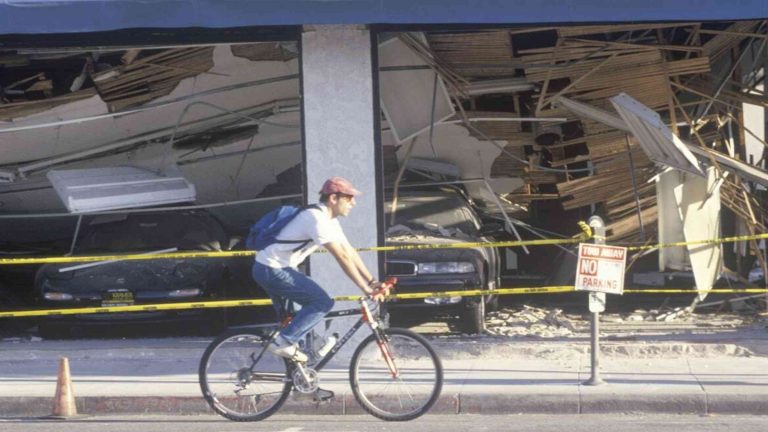The model provides a contour map showing the depth of the soil bearing layer, helping urban planners identify areas susceptible to liquefaction.
In earthquake-prone regions like Japan, ground stability needs to be more accurately predicted to reduce the risk of liquefaction. Towards this end, the researchers used machine learning models such as artificial neural networks and bagging techniques to create an accurate 3D map of the constituency using data from 433 locations in Tokyo’s Setagaya Ward. This approach can identify stable construction sites, strengthen disaster planning, contribute to safer urban development, and make cities more resilient to liquefaction risks.
An AI-based model proposed by Japanese researchers provides detailed ground stability maps, allowing smart cities to identify safe construction zones and reduce liquefaction risks. The proposed model could lead to safer cities in earthquake-prone areas. Source: Author provided.
As urban areas expand, the threat of natural disasters has become a pressing concern for urban planners and disaster management authorities. In an earthquake-prone country like Japan, one of the major risks to infrastructure is liquefaction. Liquefaction is a phenomenon in which soil, loosened and moistened by violent shaking, loses its strength and behaves like a liquid. Liquefaction can cause buildings to sink into the earth, cracks in foundations, and the collapse of public facilities such as roads and water supplies.
Every time a major earthquake occurs, liquefaction of the ground occurs, causing extensive damage. The 2011 Tohoku Earthquake caused liquefaction and damaged 1,000 homes. A magnitude 6.2 earthquake caused liquefaction in Christchurch, destroying 80% of the water and sewage systems. The Noto earthquake that occurred in 2024 caused widespread liquefaction and damaged 6,700 homes.
To make cities more resilient to the effects of liquefaction, Professor Shinya Inazumi and student Yuxin Cong from Japan’s Shibaura Institute of Technology are developing a machine learning model to predict how soil will react during earthquakes. . These models use geological data to create detailed 3D maps of soil layers and identify stable areas and areas prone to liquefaction. Unlike manual soil testing methods that cannot cover all locations, this approach provides a broader and more detailed understanding of soil behavior.
A recent study published in Smart Cities on October 8, 2024 used artificial neural networks (ANN) and ensemble learning techniques to improve soil stability and support, a key indicator of soil stability. We have accurately estimated the depth of the layer. Liquefaction phenomenon occurs during earthquakes. “This study establishes a highly accurate prediction method for unknown points and regions, demonstrating the great potential of machine learning in geotechnical engineering. It will facilitate critical, safer and more efficient infrastructure planning and ultimately contribute to the development of safer and smarter cities,” says Professor Inazumi. Predicting areas with deep and stable support layers can help identify where the soil can better support buildings, especially when events like liquefaction occur. The researchers collected support depth data from 433 sites in Setagaya Ward, Tokyo, using standard penetration tests and mini-ram sounding tests. In addition to support depth, important information about each location was also recorded, including longitude, latitude, and elevation.
This data was used to train an ANN to predict the support layer depth at 10 locations, utilizing actual field measurements to assess the accuracy of the predictions. To improve the accuracy of these predictions, the researchers applied a technique called bagging (bootstrap aggregation). This involves training the model multiple times on different subsets of the training data. This approach improved prediction accuracy by 20%.
The researchers used the predicted values to create a contour map showing the depth of the supporting layer within a 1km radius of four selected locations in Setagaya Ward. This map is a valuable visual aid for civil engineers, helping them identify suitable construction sites with stable soil conditions. It also helps disaster management experts identify areas susceptible to soil liquefaction, allowing for better risk assessment and mitigation strategies.
The researchers envision their method to be a key enabler of smart city growth, highlighting the importance of data-driven strategies in guiding urban development and infrastructure planning. “This research provides the foundation for safer, more efficient, and cost-effective urban development. By integrating advanced AI models into geotechnical analysis, smart cities can reduce liquefaction risks. We can better mitigate this and strengthen the resilience of entire cities,” said Professor Inazumi. We are optimistic about the future implications of this research. In the future, researchers will improve model accuracy by incorporating additional ground conditions and developing specialized models for coastal and non-coastal regions, taking into account the influence of groundwater, a key factor in liquefaction. We plan to improve this.


